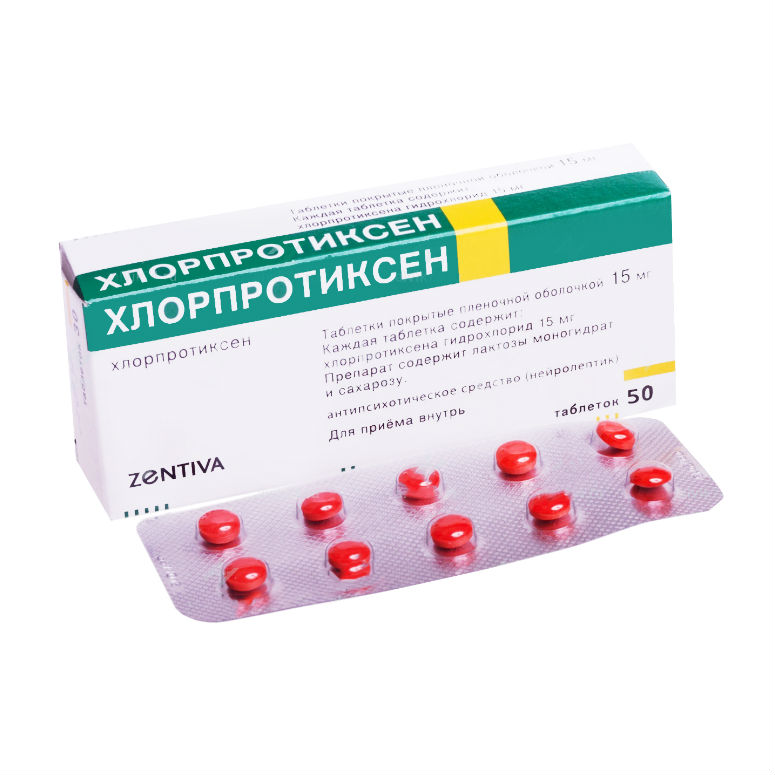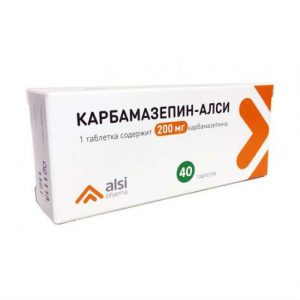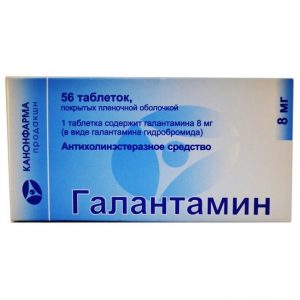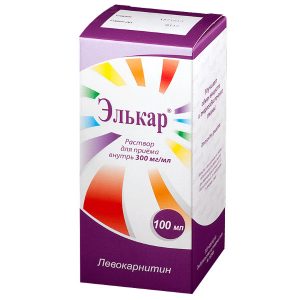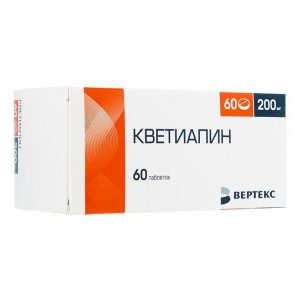Description
release coating coated tablets
Packing
50 pcs
Pharmacological action of
Antipsychotic effect of Chlorprotixen is associated with its blocking effect on dopamine receptors. The antiemetic and analgesic properties of the drug are also associated with the blockade of these receptors. Chlorprotixen is able to block 5-HT2 receptors, 1 – adrenergic receptors, and H1 – histamine receptors, which determines its adrenergic blocking hypotensive and antihistamine properties.
Pharmacokinetics
Oral bioavailability of chlorprotixen is approximately 12%. Chlorprotixen is rapidly absorbed from the intestine, serum Cmax is reached after 2 hours. T1 / 2 is about 16 hours. Chlorprotixen crosses the placental barrier and is excreted in breast milk in small amounts. Metabolites do not have antipsychotic activity, excreted in feces and urine.
Indications
Chlorprotixen is a sedative antipsychotic with a wide range of indications, which include:
psychoses, including schizophrenia and manic states, which occur with psychomotor agitation, agitation and anxiety,
, alcohol addiction, and alcohol withdrawal symptoms consciousness in elderly patients
behavioral disorders in children
depressive states, neuroses, psychosomatic disorders
insomnia
pain (in a combination analgesics).
Contraindications
CNS depression of any origin (including that caused by alcohol intake, barbiturates or opiates)
coma
vascular collapse
hematopoietic diseases
pheochromocytoma
hypersensitivity to Chlorprotixen components.
Use during pregnancy and lactation
Chlorprotixen should not, if possible, be prescribed to pregnant women and during breastfeeding.
Composition
1 film-coated tablet contains:
active substance: chlorprotixen hydrochloride 15 mg,
excipients: corn starch, lactose monohydrate, sucrose, calcium stearate, talc
shell composition: hypromellose 2910/5, macrogol 6000, macrogol 300, talc, aluminum varnish based on yellow sunset dye.
Dosage and administration of
Chlorprotixen is taken orally. Dose, frequency and duration of use are set individually. The average daily dose, divided into 2-3 doses, is 500 mg.
Side effects
Drowsiness, tachycardia, dry mouth, excessive sweating, difficulty in accommodation. These side effects, usually occurring at the beginning of therapy, often disappear as it continues.
Orthostatic hypotension may occur, especially when using Chlorprotixen in high dosages.
Dizziness, dysmenorrhea, skin rashes, constipation are rare. Extrapyramidal symptoms are especially rare.
Isolated cases of lowering the seizure threshold, the occurrence of transient benign leukopenia and hemolytic anemia are described.
With prolonged use, especially in high doses, can be observed: cholestatic jaundice, galactorrhea, gynecomastia, decreased potency and / or libido, increased appetite, increased body weight.
Drug Interaction
The inhibitory effect of chloroprothixene on the CNS may be enhanced with simultaneous administration with ethanol and ethanol-containing drugs, anesthetics, opioid analgesics, sedatives, hypnotics, neuroleptics.
The anticholinergic action of chlorprothixene is enhanced by the simultaneous use of anticholinergic, antihistamine and antiparkinsonian agents.
The drug enhances the action of antihypertensives.
Concurrent administration of chlorprothixene and adrenaline can lead to hypotension and tachycardia.
The use of chlorprothixene leads to a decrease in the seizure threshold, which requires additional dose adjustment of antiepileptic drugs in patients with epilepsy.
The ability of chlorprothixene to block dopamine receptors reduces the effectiveness of levodopa.
Extrapyramidal disorders may occur with the concomitant use of phenothiazines, metoclopramide, haloperidol, and reserpine.
Overdose
Symptoms. Sleepiness, hypo- or hyperthermia, extrapyramidal symptoms, cramps, shock, coma.
Treatment. Symptomatic and supportive. Gastric lavage should be performed as soon as possible, the use of sorbent is recommended. Steps must be taken to maintain the activity of the respiratory and cardiovascular systems. Do not use adrenaline because this can lead to a subsequent decrease in blood pressure. Seizures can be stopped with diazepam and extrapyramidal disorders with biperiden.
Storage conditions
In the dark place at a temperature of no higher than 25 ° C.
The Expiration of
is 3 years.
Terms of pharmacies holiday
Prescription
Zentiva k.s., Czech Republic
